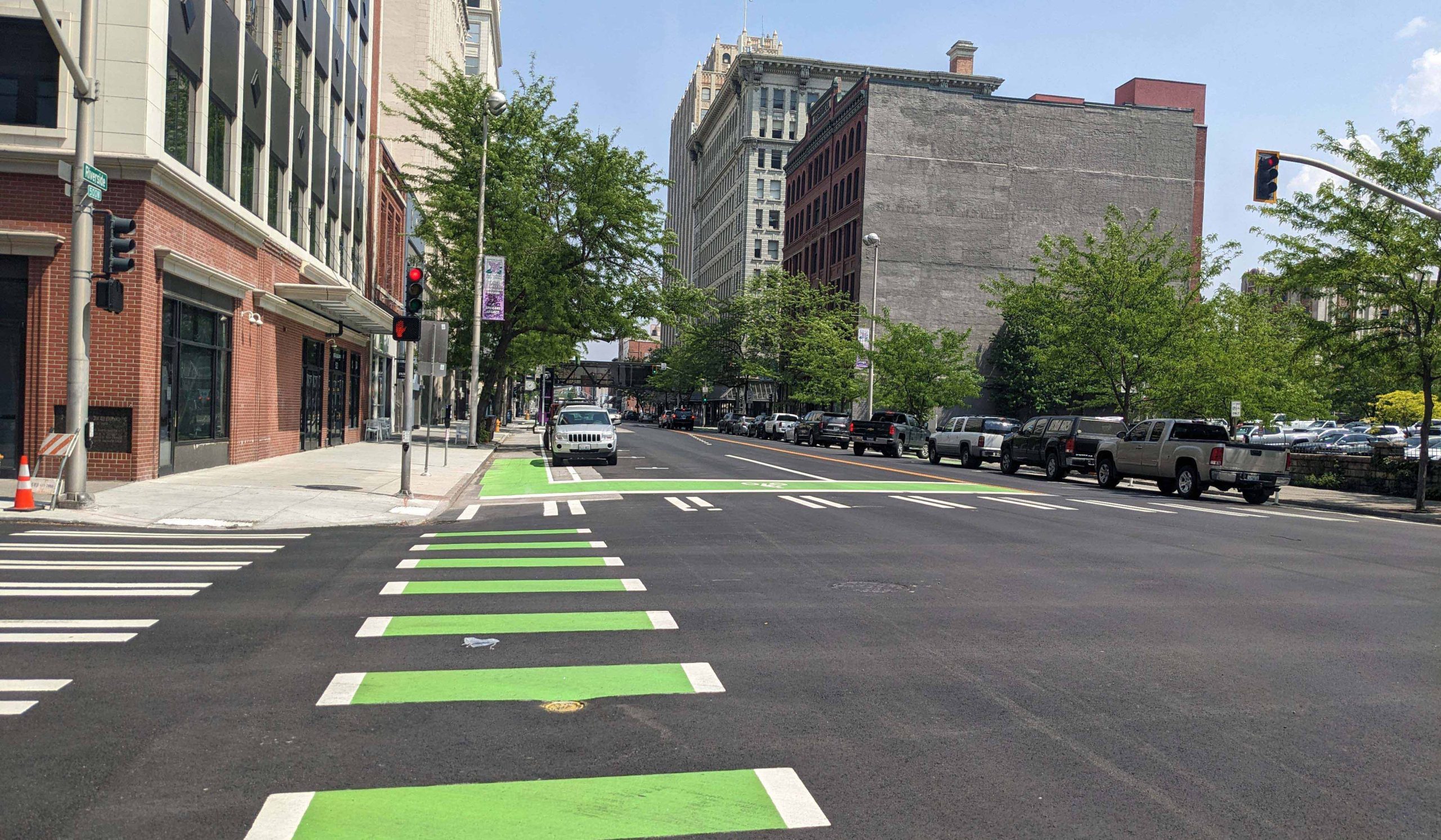The need for maintenance of active transportation facilities is relatively new, and the development of consistent levels of service and treatment intervals for all aspects of these facilities is just emerging. This project explored the challenges and opportunities associated with maintaining these facilities, with particular emphasis on lanes that serve bicyclists.
In most areas, maintenance of bicycle and pedestrian pathways is driven by complaints rather than defined service guidance. This is because maintenance practices for the active transportation elements of complete streets in North America have not been standardized to the degree that they have for roads and highways. In addition, bike lanes, pathways, and pedestrian zones create unique maintenance requirements that are often mismatched with the staff and equipment of most state departments of transportation.
The research team gained insights into active transportation facility maintenance in Western and Eastern Washington, particularly bike lanes and bicycle tracks that are adjacent to roadways and separate shared-use paths, by interviewing Washington State Department of Transportation (WSDOT) maintenance staff. They also conducted a literature review and spoke with subject matter experts from other states, cities, and provinces in North America and abroad.
The report identifies the challenges and opportunities associated with designing these facilities for long-term maintenance. It describes how leading state and local jurisdictions currently maintain them, and it highlights emerging best practices among complete streets leaders. The researchers did not make recommendations about specific maintenance practices for WSDOT to adopt, but they did recommend a process for developing maintenance guidance for these facilities.
The researchers found that communities with a strong commitment to maintaining well-functioning bike lanes and pathways have developed maintenance guidance that varies by the facility type, the useful life of the materials selected for that facility, the level of utilization by bicyclists and pedestrians, the climate zone, and the amount of snow or debris that accumulates.
The researchers suggested that WSDOT could undertake an iterative process to shift to a standardized system for maintenance that suits the particular needs and requirements of Washingtonians. Bike lanes and pathways often require different equipment and techniques than highway maintenance. Other jurisdictions have adopted dedicated teams with dedicated equipment for maintaining active transportation facilities. These dedicated teams can make those facilities their first priority, which highway maintenance staff cannot do. Dedicated maintenance teams for active transportation facilities can bring the specialization and focus necessary to generate better maintenance outcomes.
Report: WA-RD 945.1
Authors:
Daniel Malarkey
David Prendez
Rubina Singh
Don MacKenzie
UW Department of Civil and Environmental Engineering
Sponsor: WSDOT
WSDOT Technical Monitor: Ursula Sandstrom
WSDOT Project Manager: Jon Peterson

